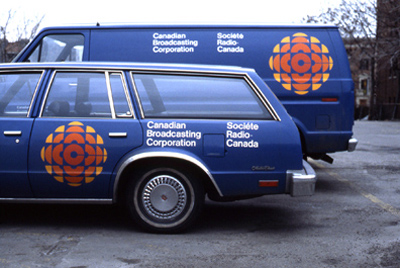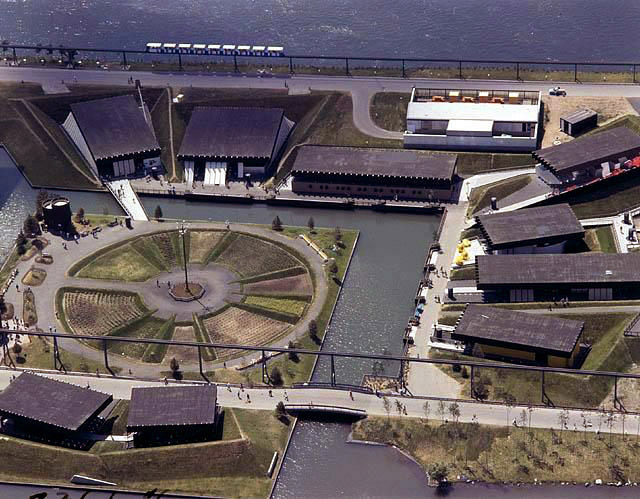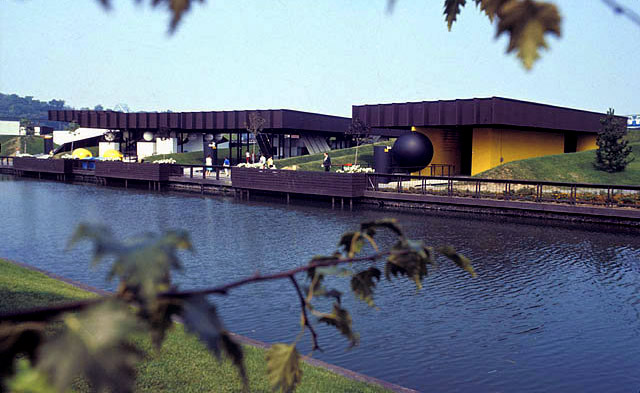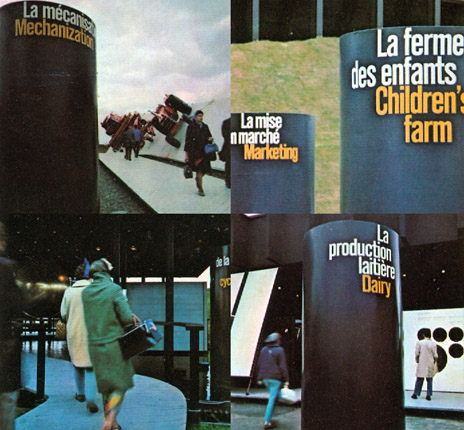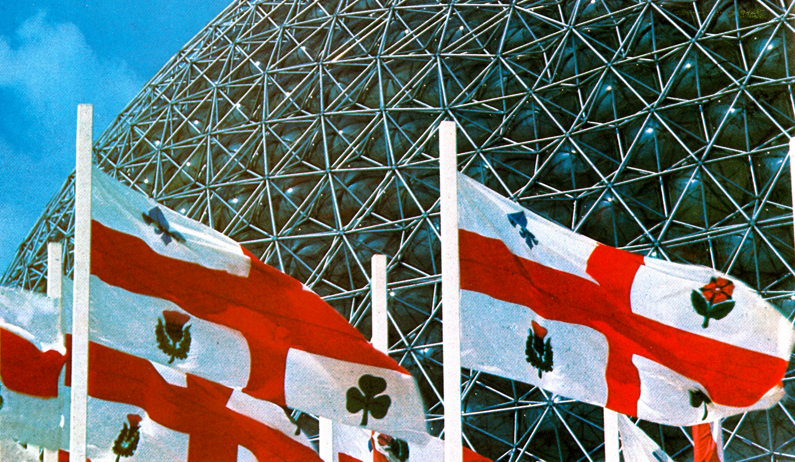 Flags of the city of Montreal flew in the foreground of the Biosphere.
Flags of the city of Montreal flew in the foreground of the Biosphere.
In 1968, the
U.S. pavilion became the
Biosphere.
The interior of the 20-storey geodesic dome built for Expo 67 was transformed into an giant parkland and aviary for
Man and His World 68.
The basic structure that housed the U.S. display remained: the
space frame shell covered with a "skin" of curved acrylic panels, the platforms at various levels reached by stairs and escalators, as well as the
Minirail that ran right through the middle. A plaque inside the pavilion's entrance read:
"This building, the United States pavilion at
Expo 67, is a gift of the American people to
the City of Montreal. It was presented by
Leonard H. Marks, Director of the U.S.
Information Agency, to Mr. Jean Drapeau,
Mayor of Montreal, on the 20th of July,
1967, as a symbol of warm friendship
between Canada and the United States."
The pavilion's platforms had been made into a series of gardens, promenades and lookouts. The
Sun Garden was done in a Moorish style, while the
Classic Garden had a french influence complete with trimmed shrubbery and distinguished fountains.
Birds of all sorts were featured in the
Biosphere, including some tropical specimens. Birds of prey such as hawks, owls and eagles could be seen in the pavilion's upper level. A large lagoon near the main entrance featured game birds and water fowl. Near it, a majestic 50-foot elm was just one of the many trees placed throughout the
Biosphere to serve as perches for its feathered inhabitants (in total some 600 birds of 150 species).
The pavilion's theatre showed 2 films from the
National Film Board: one discussed the migration of wild geese while the other provided an intimate glimpse of wildlife in Quebec.
Multicolored fabric kites were suspended from the curved interior of the structure, in place of the
space capsule parachutes that had been on display during Expo 67.
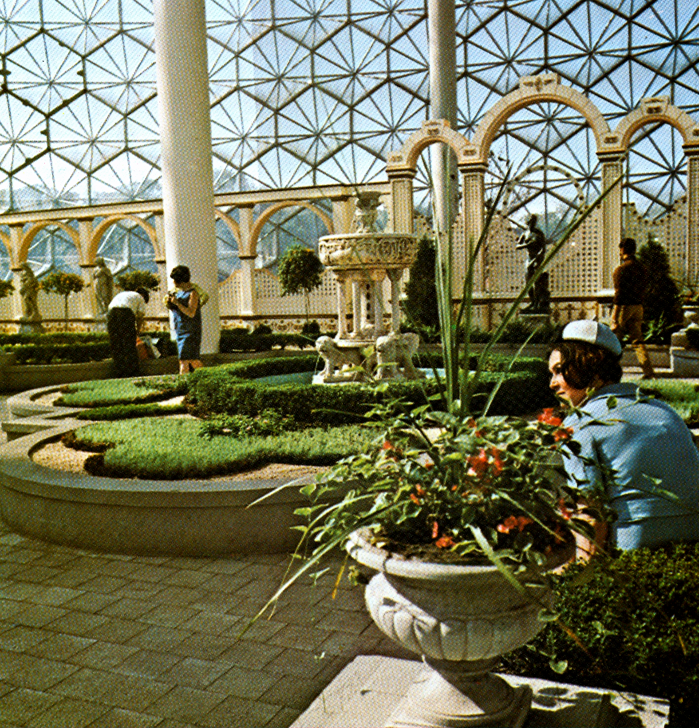 One of the Biosphere's formal gardens.
One of the Biosphere's formal gardens.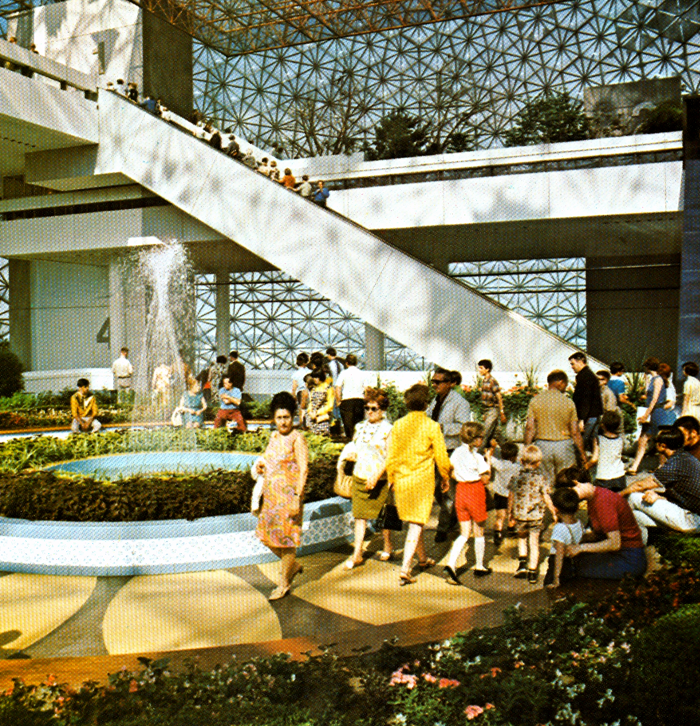 The longest escalator in the world took visitors to the summit of the Biosphere.
The longest escalator in the world took visitors to the summit of the Biosphere.
 Flamingos were just one of many exotic breeds of birds on display.
Flamingos were just one of many exotic breeds of birds on display.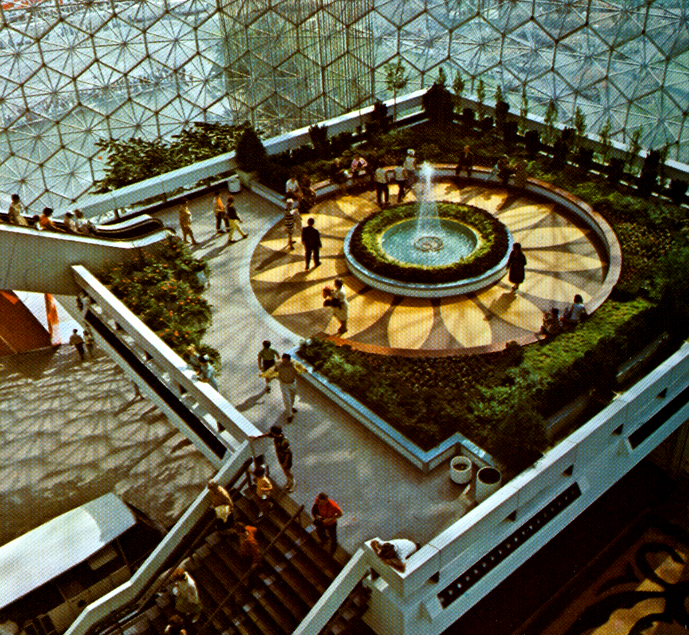 Fountains added to the serene atmosphere of the Biosphere.
Fountains added to the serene atmosphere of the Biosphere.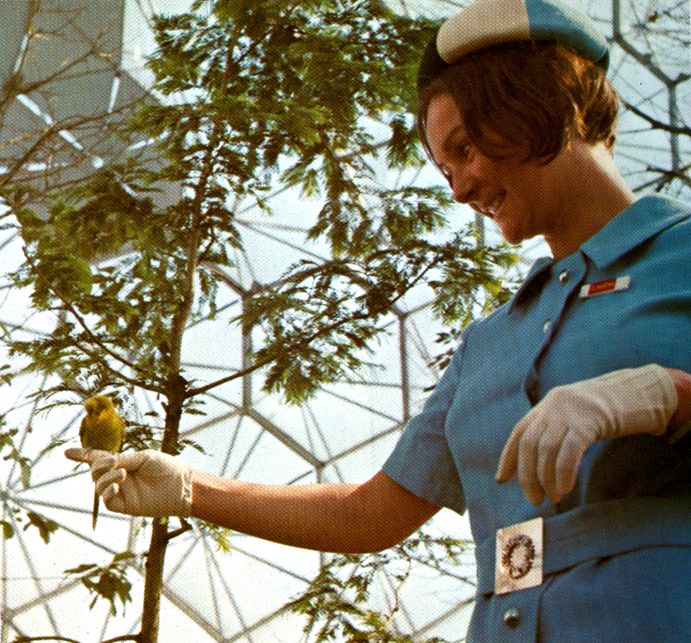 A Man and His World guide who made friends with a budgie.images: personal collection
A Man and His World guide who made friends with a budgie.images: personal collection
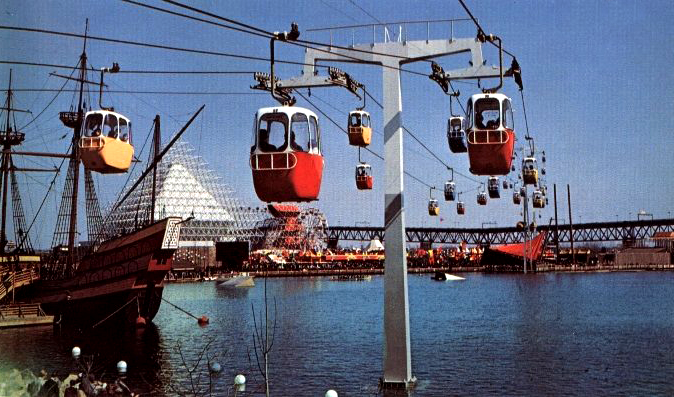
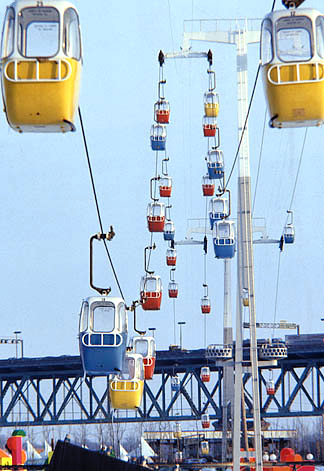 The Sky Ride was a 120-foot high cable car system that travelled over Dolphin Lake in the La Ronde sector of Expo 67.
The Sky Ride was a 120-foot high cable car system that travelled over Dolphin Lake in the La Ronde sector of Expo 67. The Sky Ride's station near La Ronde's entrance.
The Sky Ride's station near La Ronde's entrance. Two panoramic rides: the Sky Ride (foreground) and La Spirale (background).
Two panoramic rides: the Sky Ride (foreground) and La Spirale (background).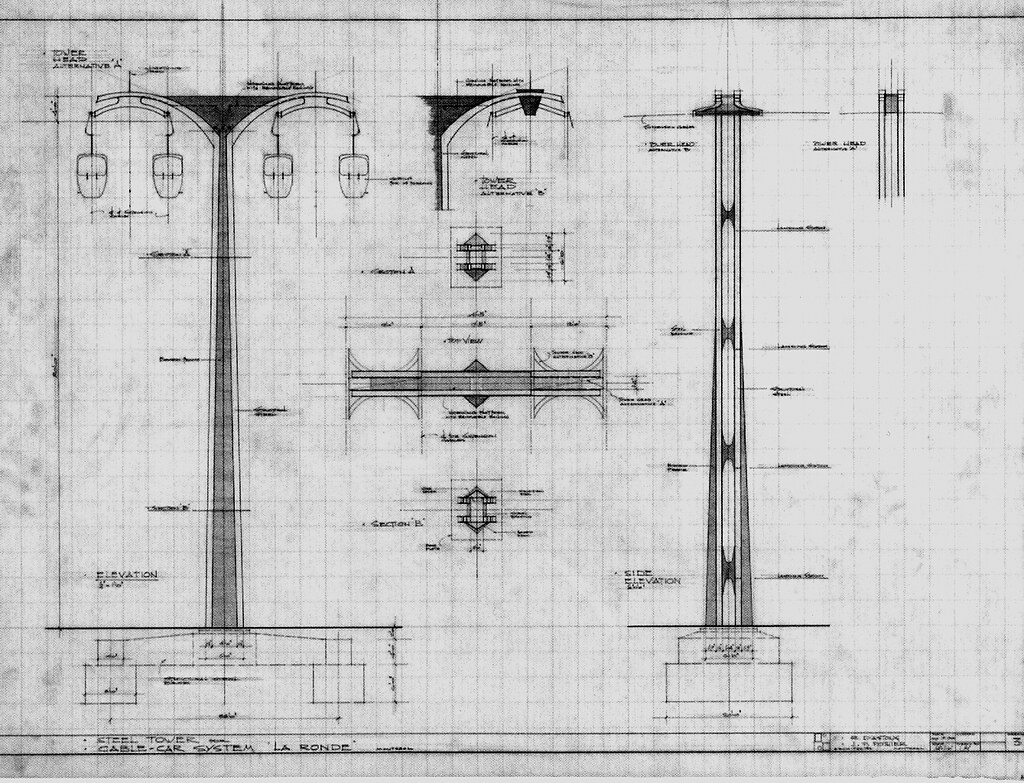 Architectual plans of the Sky Ride, 1965.
Architectual plans of the Sky Ride, 1965.
